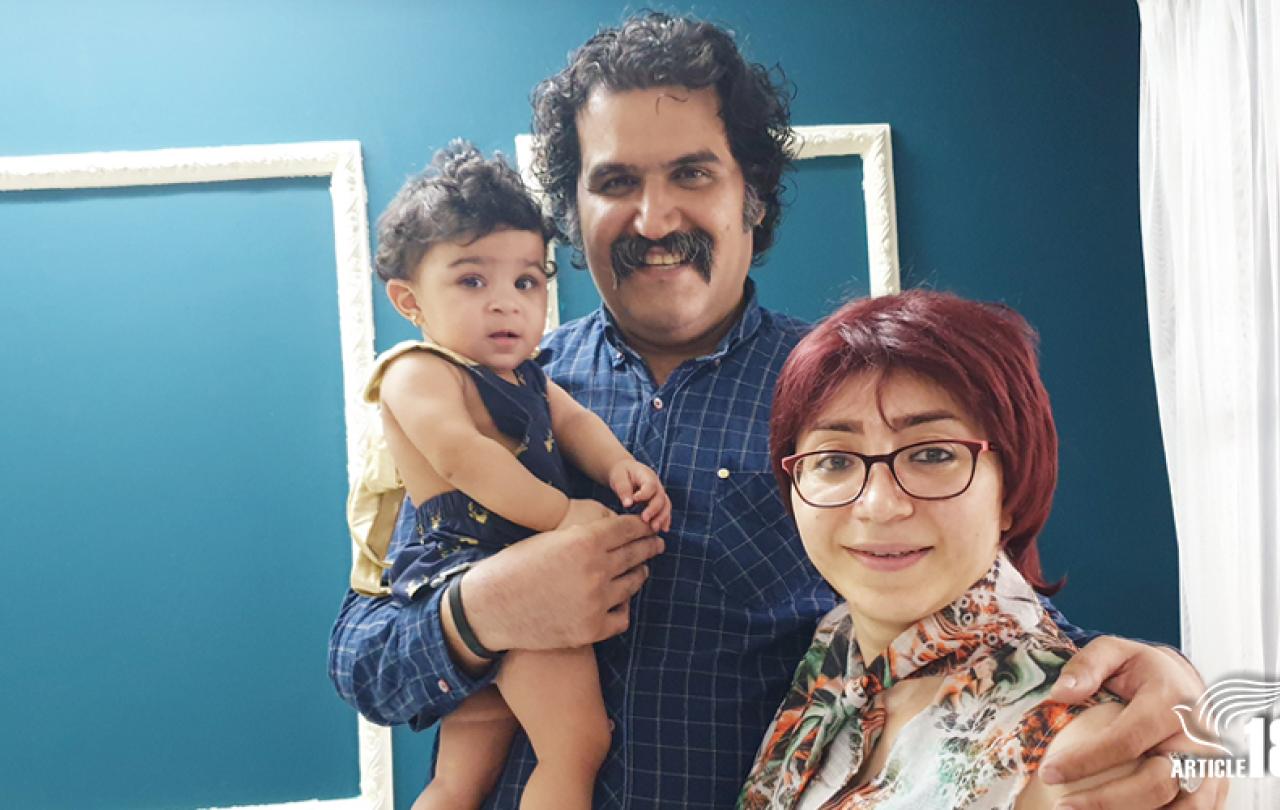
It might surprise you to learn that the Islamic Republic of Iran likes to present itself as a defender of minorities.
It’s certainly not the sort of title you might associate with a country with such a grim human-rights record, amounting to “crimes against humanity” according to the findings of an independent fact-finding mission.
But akin to the template of the Russians and other rogue regimes, Iran knows well that when it comes to the international arena, appearances can often take the spotlight away from ghastly realities.
And so, when the fact-finding mission releases a report, as it did last week, outlining violations against minorities with the title They have dehumanised us, while it may achieve little in terms of change on the ground, it has the potential to at least damage the Islamic Republic’s carefully managed facade on the international stage.
In the five years I’ve been working for Iranian Christian charity Article18, I've grown extremely familiar with the way in which the Islamic Republic brings representatives of its recognised religious minorities - Jews, Christians, and Zoroastrians - to the United Nations in an attempt to prove its inter-religious tolerance.
The latest example of this was in October, when the Armenian MP - one of five minority representatives in the Iranian parliament (as the Islamic Republic likes to remind us) - was rolled out before the UN Human Rights Committee to list the number of churches, synagogues and temples in Iran.
The point? That if there are so many places where minorities can worship - for the record, he referenced 380 churches, 16 synagogues and 78 temples - then how can anyone claim minorities are persecuted?
What the MP failed to mention was that those 380 churches, for example, are only open to those considered to have been born as Christians, which in Iran means Armenians or Assyrians.
Meanwhile, the door remains firmly closed to anyone who may wish to convert to Christianity or even simply visit a church to find out more.
Article 18 enshrines the freedoms to change one's faith and to share it with others. Both are denied to Iranians of all faiths and none.
This hasn’t always been the case. There were once a large and growing number of churches that welcomed converts, but over the past 15 years they were either forced to close or to change the language in which they operate. These days, churches can only preach in Assyrian or Armenian.
Last year marked the 10th anniversary of the forced closure of the largest Persian-speaking church in Iran, the Central Assemblies of God Church in Tehran, whose popularity ended up being its death knell.
Just four Persian-speaking churches remain in the whole of Iran, all Anglican, and these can only welcome those who can prove they were Christian before the establishment of the Islamic Republic in 1979. They are not allowed to admit new members, and even these have not been permitted to reopen since their forced closure during the Covid-19 pandemic.
So, while churches in the West are often derided for their ageing populations, for Iran’s last remaining Persian-language churches, that future is entirely inevitable.
And while the Armenian MP talks about Iran’s hundreds of churches, he fails to mention that converts have nowhere to worship, as was highlighted in our #Place2Worship campaign, which was inspired by an open letter written by three converts serving long prison sentences for their membership of house-churches.
The three wanted to know where they might worship, free from the fear of being re-arrested.
Because that is why Christians are imprisoned in Iran - simply for meeting together in what we in the West call “house groups”, and what in Iran are known as “house-churches”, or, in the words of the Iranian authorities, “enemy groups”.
But it isn't only the converts who suffer. Armenians and Assyrians have themselves received long prison sentences for their decision to share their faith, a right that is enshrined in international covenants that Iran has signed, including Article 18 of the International Covenant on Civil and Political Rights, from which my organisation derives its name.
Article 18 enshrines the freedoms to change one's faith and to share it with others. Both are denied to Iranians of all faiths and none.
But they aren't quite so fond of scrutiny, such as a 17,000-word report by a credible international team of experts.
In this context, I find it both baffling and even slightly amusing whenever I see the Islamic Republic of Iran presenting itself as the defender of minorities.
Iran’s new president, Masoud Pezeshkian, littered his "election" campaign with references to the “dignity” of Iran’s minorities; it’s common to see propaganda highlighting Iran's alleged defence of Christians in the region against ISIS, for example; and they love to talk about the number of churches and minority MPs that they have.
But they aren't quite so fond of scrutiny, such as a 17,000-word report by a credible international team of experts.
According to the experts, minorities in Iran face “ongoing institutionalised discrimination and marginalisation”, the “root causes” or “enablers” of which are the “gross human-rights violations against them”.
The fact-finding mission highlight the example of a couple whose adopted daughter was ruled should be taken away from them because they had become Christians and she was considered to have been born a Muslim.
I remember the story of little Lydia very well - certainly one of the most heart-wrenching of my time working with Article18.
It also produced one of the strongest reactions, with 120 lawyers and activists signing a joint letter to the head of the judiciary at the time - one Ebrahim Raisi - calling for the decision to be overturned.
It wasn’t.
And while the Islamic Republic will no doubt seek to laugh or shrug off the “politically motivated” report, as they have countless others, it is to be hoped that at least some who may have been taken in by the regime's propaganda in the past will see reason to think twice the next time around.





